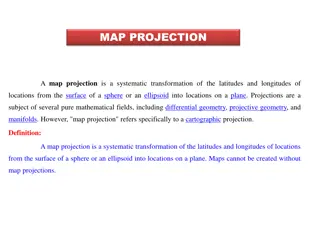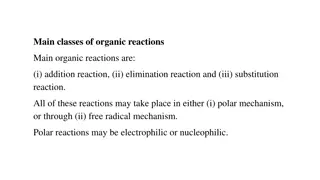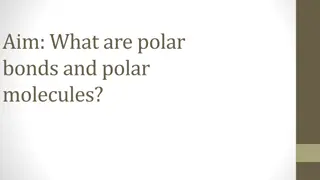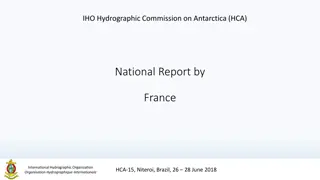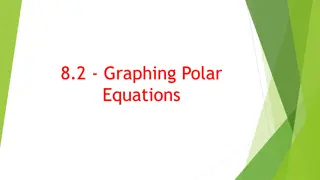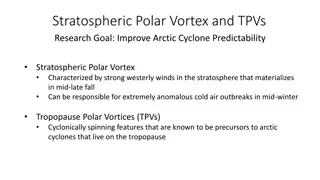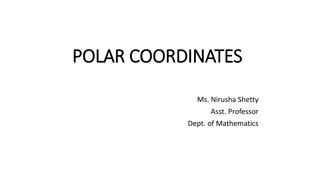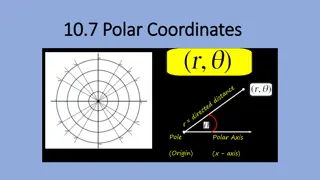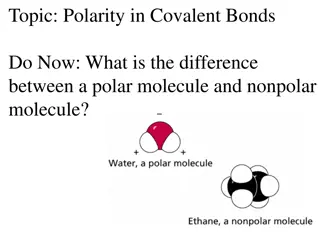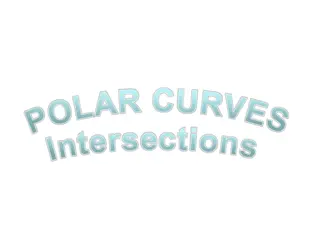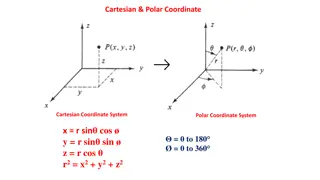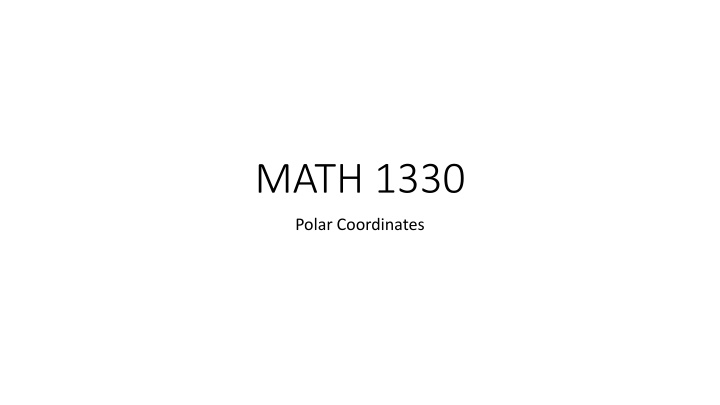
Understanding Polar Coordinates and Conversions
Explore the concept of polar coordinates, multiple representations, negative r values, and conversion between rectangular and polar coordinates. Learn how to determine which point does not represent the same coordinates as others in a given set.
Download Presentation

Please find below an Image/Link to download the presentation.
The content on the website is provided AS IS for your information and personal use only. It may not be sold, licensed, or shared on other websites without obtaining consent from the author. If you encounter any issues during the download, it is possible that the publisher has removed the file from their server.
You are allowed to download the files provided on this website for personal or commercial use, subject to the condition that they are used lawfully. All files are the property of their respective owners.
The content on the website is provided AS IS for your information and personal use only. It may not be sold, licensed, or shared on other websites without obtaining consent from the author.
E N D
Presentation Transcript
MATH 1330 Polar Coordinates
Polar Coordinates Polar Coordinates Polar coordinates define every point as a distance (r) from a central point (the pole), and an angle ( ) from a central line (the polar axis). (r, ) r
Multiple Representations Multiple Representations Since polar points are angular in their definition, one point can be represented in numerous ways. (r, ) = (r, + 2n ) (r, ) +2
Negative r - values If the r value is negative r value, think of this: If you are facing the angle of /3 and walk backwards a distance of 5, you be at the point: (-5, /3)
Multiple Representations Multiple Representations Since polar points are angular in their definition, one point can be represented in numerous ways. (r, ) = (r, + 2n ) (r, ) = (-r, +[2n+1] ) (r, ) + -r
Determine which coordinate does not represent the same point as the others. (5, /3) (5, 7 /3) (-5, 4 /3) (-5, 7 /3)
Determine which coordinate does not represent the same point as the others. (5, /3) = (r, ) (5, 7 /3) = (r, + 2 ) (-5, 4 /3) = (-r, + ) (-5, 7 /3) = (-r, + 2 )
Determine which coordinate does not represent the same point as the others. (5, /3) = (r, ) (5, 7 /3) = (r, + 2 ) All the same point (-5, 4 /3) = (-r, + ) (-5, 7 /3) = (-r, + 2 ) Different point
Conversion between Rectangular and Polar Coordinates x = r cos y = r sin = arctan y/x r2 = x2 +y2
Convert from Rectangular into Polar (5, 2) (-6, 1)
Convert from Polar into Rectangular (3, /6) (-2, /4)
Polar Graphs Convert the following graphs into polar coordinates: x2 + y2 = 16 (x-2)2 + y2 = 4 x2 + (y-3)2 = 9
Polar Graphs Convert the following graphs into polar coordinates: x2 + y2 = 16 r2 = 16 r = 4 (x-2)2 + y2 = 4 x2 + (y-3)2 = 9
Polar Graphs Convert the following graphs into polar coordinates: x2 + y2 = 16 r2 = 16 r = 4 (x-2)2 + y2 = 4 x2 + (y-3)2 = 9 (rcos 2)2 + (rsin )2 = 4 r2cos2 4rcos + 4 + r2sin2 =4 r2 = 4rcos r = 4cos
Polar Graphs Convert the following graphs into polar coordinates: x2 + y2 = 16 r2 = 16 r = 4 (x-2)2 + y2 = 4 r = 4cos x2 + (y-3)2 = 9 r = 6sin
Lines Convert the following into polar coordinates: y = 6 x = 5 y = x y = 2x + 3
Lines Convert the following into polar coordinates: y = 6 r sin = 6 x = 5 y = x y = 2x + 3
Lines Convert the following into polar coordinates: y = 6 r sin = 6 r = 6 csc x = 5 y = x y = 2x + 3
Lines Convert the following into polar coordinates: y = 6 r = 6 csc x = 5 r = 5 sec y = x y = 2x + 3
Lines Convert the following into polar coordinates: y = 6 r = 6 csc x = 5 r = 5 sec y/x = 1 y = x y = 2x + 3
Lines Convert the following into polar coordinates: y = 6 r = 6 csc x = 5 r = 5 sec y/x = 1 arctan(y/x)= arctan 1 y = x y = 2x + 3
Lines Convert the following into polar coordinates: y = 6 r = 6 csc x = 5 r = 5 sec y/x = 1 arctan(y/x)= arctan 1 y = x y = 2x + 3 = /4
Lines Convert the following into polar coordinates: y = 6 r = 6 csc x = 5 r = 5 sec = /4 y = x y = 2x + 3
Lines Convert the following into polar coordinates: y = 6 r = 6 csc x = 5 r = 5 sec = /4 y = x y = 2x + 3 y 2x = 3
Lines Convert the following into polar coordinates: y = 6 r = 6 csc x = 5 r = 5 sec = /4 y = x y = 2x + 3 y 2x = 3 rsin 2rcos = 3
Lines Convert the following into polar coordinates: y = 6 r = 6 csc x = 5 r = 5 sec = /4 y = x y = 2x + 3 y 2x = 3 rsin 2rcos = 3 r = 3/sin 2cos
Lines Convert the following into polar coordinates: y = 6 r = 6 csc x = 5 r = 5 sec = /4 y = x r = 3/sin 2cos y = 2x + 3
Polar Graphs: Rose Curves: r = 5 sin (3 ) r = 2 cos (2 ) Rose Curves are always of the form: r = a sin (n ) or r = a cos (n ). Based on your graphs, how can you determine the length of each petal of the rose-curve? How can you determine the number of petal in the entire graph? (Hint: there are different rules for even n-values and odd n-values.)
Polar Graphs: Lemi ons: This is pronounced Lee-Mah-Zon. r = 3 + 2 sin r = 3 6 cos r = 4 + 4 sin r = 5 + 2cos Lemi ons are always of the form r = a b sin or r = a b cos . They are categorized in four groups: convex, dimpled, cardioid, and with inner loop. The value of b/a will determine which of these categories it fits into.
Lemions Based on your graphs and some vocabulary (such as cardio meaning heart-related) determine which of the above equations become which classifications. Then determine the value of b/a that would create these graphs. b/a < < b/a < 1 b/a = 1 b/a > 1 Convex: Dimpled: Cardioid: Inner Loop: Example (from above): Example (from above): Example (from above): Example (from above):
Polar Graphs: Lemnoscates: r2= 16 sin (2 ) r2 = -25sin(2 ) r2= 9 cos (2 ) r2 = -4 cos (2 ) Remember, you are calculating and plotting r values, not r2 values. If r2 is negative, then no point can be plotted.
r = 2 + 4 sin r = 2 + 4 sin 0
r = 2 + 4 sin r = 2 + 4 sin 0 r = 2 + 0
r = 2 + 4 sin r = 2 + 4 sin 0 r = 2 + 0 r = 2
r = 2 + 4 sin r = 2 + 4 sin 0 r = 2 + 0 r = 2
Animation of the graph: https://www.desmos.com/calculator/a4i6rodk73
You can get all 4 kinds of Limions based on the constants in the equation. View the following animation: https://www.desmos.com/calculator/vxzfq85gnd

